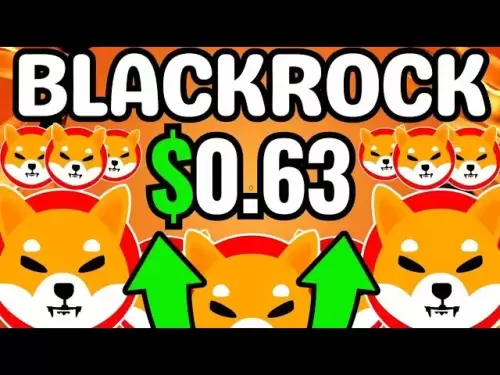-
 Bitcoin
Bitcoin $118000
-0.30% -
 Ethereum
Ethereum $3672
2.06% -
 XRP
XRP $3.433
-1.26% -
 Tether USDt
Tether USDt $1.000
-0.03% -
 BNB
BNB $744.4
1.39% -
 Solana
Solana $178.5
0.43% -
 USDC
USDC $0.9998
-0.01% -
 Dogecoin
Dogecoin $0.2544
1.55% -
 TRON
TRON $0.3197
-1.41% -
 Cardano
Cardano $0.8411
1.25% -
 Hyperliquid
Hyperliquid $45.06
-0.50% -
 Stellar
Stellar $0.4642
-0.67% -
 Sui
Sui $3.872
1.79% -
 Chainlink
Chainlink $18.76
2.98% -
 Hedera
Hedera $0.2686
1.16% -
 Avalanche
Avalanche $24.70
3.92% -
 Bitcoin Cash
Bitcoin Cash $522.9
1.41% -
 Shiba Inu
Shiba Inu $0.00001516
0.13% -
 Litecoin
Litecoin $112.3
9.31% -
 UNUS SED LEO
UNUS SED LEO $8.999
0.24% -
 Toncoin
Toncoin $3.204
0.01% -
 Polkadot
Polkadot $4.418
3.06% -
 Uniswap
Uniswap $10.53
3.16% -
 Monero
Monero $327.6
0.76% -
 Ethena USDe
Ethena USDe $1.001
-0.02% -
 Bitget Token
Bitget Token $4.987
1.52% -
 Pepe
Pepe $0.00001371
2.34% -
 Dai
Dai $1.000
0.00% -
 Aave
Aave $323.3
0.40% -
 Bittensor
Bittensor $416.9
0.79%
How to interpret WR extreme values? What will happen to WR long-term highs?
The Williams %R indicator, ranging from 0 to -100, signals overbought above -20 and oversold below -80, with extremes at -10 and -90 indicating potential reversals.
May 22, 2025 at 10:36 pm
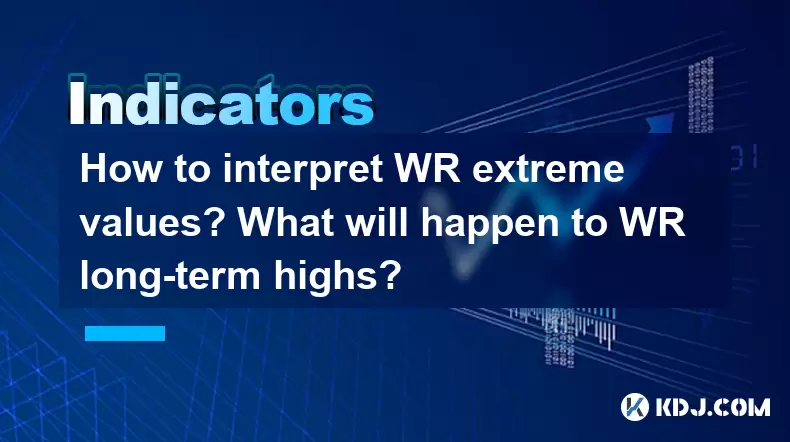
The Williams %R (WR) indicator is a momentum indicator used in technical analysis to measure overbought and oversold levels in the market. Developed by Larry Williams, the WR indicator helps traders identify potential reversal points in the price of an asset. In this article, we will delve into how to interpret extreme values of the WR indicator and what might happen when WR reaches long-term highs.
Understanding the Basics of WR Indicator
The Williams %R indicator is a range-bound oscillator that fluctuates between 0 and -100. The formula for calculating WR is as follows:
[ \text{WR} = \frac{\text{Highest High} - \text{Close}}{\text{Highest High} - \text{Lowest Low}} \times -100 ]
The key levels to watch are -20 and -80. A WR value above -20 indicates that the market is overbought, suggesting a potential downward correction. Conversely, a WR value below -80 indicates that the market is oversold, suggesting a potential upward correction.
Interpreting WR Extreme Values
When the WR indicator reaches extreme values, it provides traders with signals about the potential direction of the market. Extreme values are typically considered to be above -10 for overbought conditions and below -90 for oversold conditions.
WR above -10: When the WR indicator moves above -10, it suggests that the market is extremely overbought. This could mean that the asset's price has risen too quickly and may be due for a correction or a reversal. Traders often look for bearish divergence or other confirming indicators to validate this signal.
WR below -90: When the WR indicator moves below -90, it suggests that the market is extremely oversold. This indicates that the asset's price has fallen too rapidly and may be poised for a rebound. Traders typically look for bullish divergence or other confirming indicators to validate this signal.
What Happens When WR Reaches Long-Term Highs?
When the WR indicator reaches long-term highs, it often signals that the market has been in an overbought condition for an extended period. Long-term highs in WR can be identified when the indicator stays above -20 for a prolonged time, often weeks or months.
Market Exhaustion: When WR remains at long-term highs, it can indicate that the buying momentum is waning, and the market may be nearing exhaustion. This could lead to a significant price correction or reversal.
Bearish Divergence: A common scenario when WR reaches long-term highs is the occurrence of bearish divergence. This happens when the price of the asset makes a new high, but the WR indicator fails to reach a new high, suggesting weakening momentum.
Increased Volatility: Long-term highs in WR can also lead to increased volatility in the market as traders and investors react to the overbought conditions. This can result in sharp price movements and potential trading opportunities.
Using WR Extreme Values in Trading Strategies
Traders can incorporate WR extreme values into their trading strategies to enhance their decision-making process. Here are some practical ways to use WR extreme values:
Identifying Reversal Points: Traders can use WR extreme values to identify potential reversal points in the market. For example, if WR moves above -10 and then starts to decline, it could signal a potential downward reversal.
Confirming Other Indicators: WR extreme values can be used to confirm signals from other technical indicators, such as the Relative Strength Index (RSI) or Moving Average Convergence Divergence (MACD). For instance, if both WR and RSI indicate overbought conditions, the signal is more robust.
Setting Stop-Loss and Take-Profit Levels: Traders can use WR extreme values to set stop-loss and take-profit levels. For example, if WR moves above -10, a trader might set a take-profit level at a recent resistance level, anticipating a potential downward correction.
Practical Example of Using WR Extreme Values
Let's consider a practical example to illustrate how to use WR extreme values in trading. Suppose you are trading Bitcoin (BTC) and you notice that the WR indicator has moved above -10, indicating an extremely overbought market.
Identify the Signal: First, confirm that the WR indicator has indeed moved above -10, signaling an extremely overbought market.
Look for Confirmation: Next, look for bearish divergence or other confirming indicators such as the RSI or MACD. If these indicators also suggest overbought conditions, the signal is more reliable.
Enter the Trade: If the signal is confirmed, you might consider entering a short position on BTC, anticipating a potential downward correction.
Set Stop-Loss and Take-Profit: Set a stop-loss level above the recent high to limit potential losses. Set a take-profit level at a recent support level or a Fibonacci retracement level, anticipating where the price might correct to.
Monitor the Trade: Continuously monitor the trade and adjust stop-loss and take-profit levels as needed based on market conditions and new signals from the WR indicator.
Common Pitfalls and Misinterpretations
While the WR indicator can be a powerful tool, it is important to be aware of common pitfalls and misinterpretations. One common mistake is relying solely on the WR indicator without considering other factors.
False Signals: WR extreme values can sometimes generate false signals, especially in highly volatile markets. Always use other confirming indicators and market analysis to validate WR signals.
Ignoring Market Context: The effectiveness of WR extreme values can vary depending on the market context. For example, in a strong uptrend, an overbought signal from WR might not necessarily lead to a reversal.
Overtrading: Traders might be tempted to enter trades every time WR reaches an extreme value. This can lead to overtrading and potential losses. It is crucial to use WR as part of a comprehensive trading strategy.
Frequently Asked Questions
Q1: Can WR extreme values be used in conjunction with other indicators?
A1: Yes, WR extreme values can be effectively used in conjunction with other indicators such as RSI, MACD, and moving averages. Combining multiple indicators can provide more robust signals and enhance the reliability of trading decisions.
Q2: How often should I check the WR indicator for extreme values?
A2: The frequency of checking the WR indicator depends on your trading style. For day traders, checking the WR indicator multiple times throughout the day might be necessary. For swing traders, checking it daily or weekly might be sufficient. Always align the frequency with your overall trading strategy.
Q3: Is the WR indicator suitable for all types of cryptocurrencies?
A3: The WR indicator can be applied to any cryptocurrency that has sufficient trading volume and price data. However, the effectiveness of the indicator might vary depending on the specific characteristics of the cryptocurrency, such as its volatility and market liquidity.
Q4: How can I avoid false signals from WR extreme values?
A4: To avoid false signals from WR extreme values, always use other confirming indicators and consider the broader market context. Look for divergence between the price and the WR indicator, and pay attention to other technical and fundamental factors that might influence the market.
Disclaimer:info@kdj.com
The information provided is not trading advice. kdj.com does not assume any responsibility for any investments made based on the information provided in this article. Cryptocurrencies are highly volatile and it is highly recommended that you invest with caution after thorough research!
If you believe that the content used on this website infringes your copyright, please contact us immediately (info@kdj.com) and we will delete it promptly.
- Shanghai Court Tackles Illegal Tether Transactions: A Wake-Up Call for Crypto
- 2025-07-20 11:50:12
- Robinhood, Crypto, and Industry Reshaping: A New Era Dawns
- 2025-07-20 11:30:13
- Crypto, Altcoins, and Genius Clarity: Decoding the 2025 Bull Run
- 2025-07-20 10:50:12
- DOGE's Double Bottom: Is a $0.42 Target Really in Sight?
- 2025-07-20 10:30:12
- Cryptos Surge: Decoding Market Gains & Top Performing Assets
- 2025-07-20 10:30:12
- Shiba Inu, Market Cap, and Troller Cat: A Meme Coin Mashup for the Ages
- 2025-07-20 10:50:12
Related knowledge
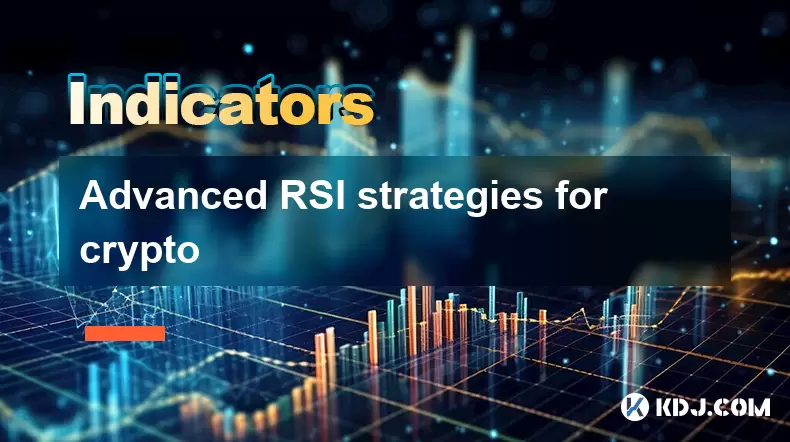
Advanced RSI strategies for crypto
Jul 13,2025 at 11:01am
Understanding the Basics of RSI in Cryptocurrency TradingThe Relative Strength Index (RSI) is a momentum oscillator used to measure the speed and chan...
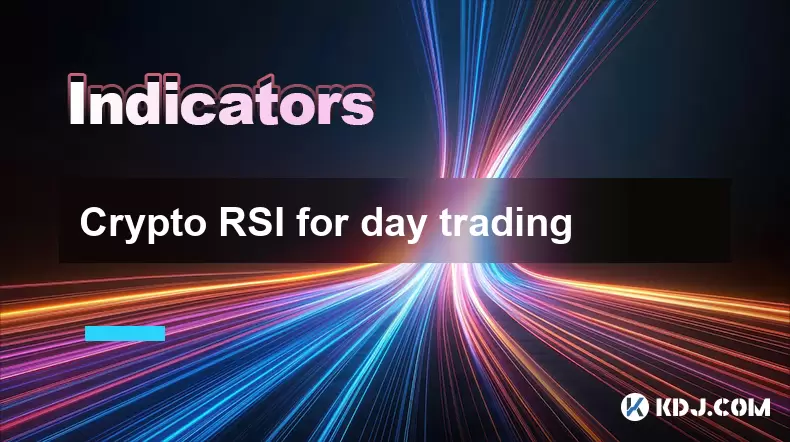
Crypto RSI for day trading
Jul 12,2025 at 11:14am
Understanding RSI in the Context of Cryptocurrency TradingThe Relative Strength Index (RSI) is a momentum oscillator used to measure the speed and cha...
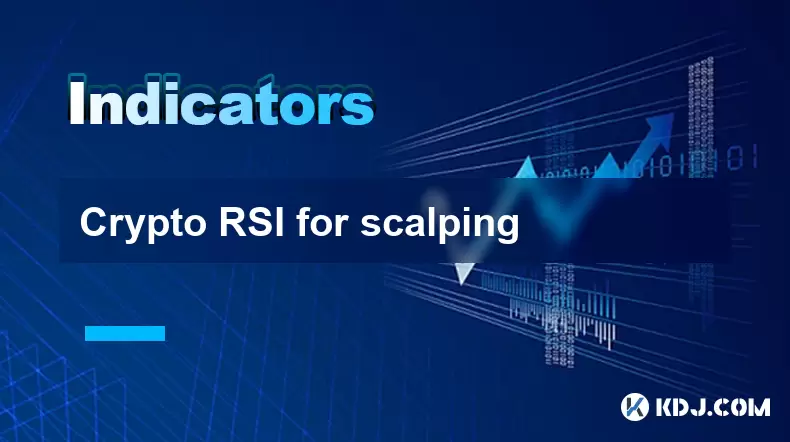
Crypto RSI for scalping
Jul 12,2025 at 11:00pm
Understanding RSI in the Context of Crypto TradingThe Relative Strength Index (RSI) is a momentum oscillator widely used by traders to measure the spe...
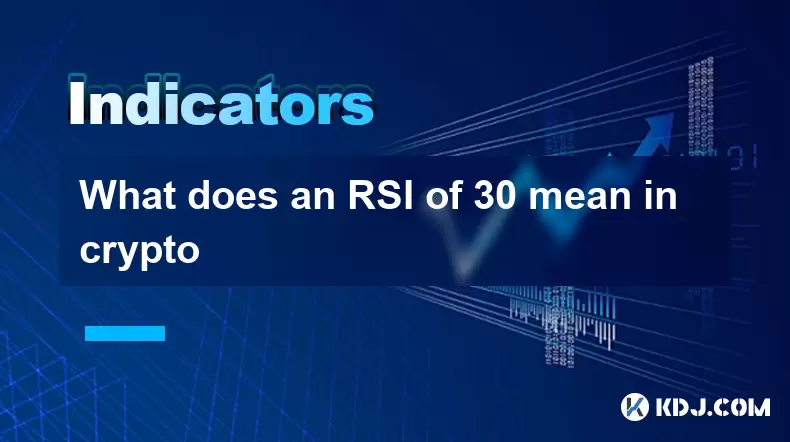
What does an RSI of 30 mean in crypto
Jul 15,2025 at 07:07pm
Understanding RSI in Cryptocurrency TradingRelative Strength Index (RSI) is a momentum oscillator widely used in cryptocurrency trading to measure the...
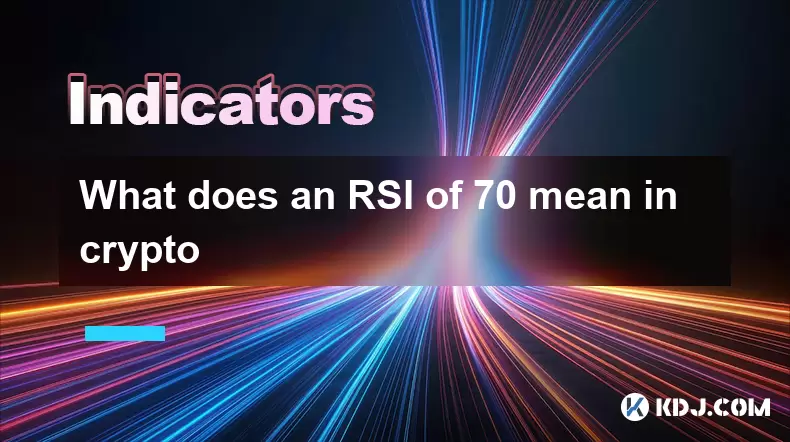
What does an RSI of 70 mean in crypto
Jul 13,2025 at 06:07pm
Understanding the RSI Indicator in Cryptocurrency TradingThe Relative Strength Index (RSI) is a widely used technical analysis tool that helps traders...
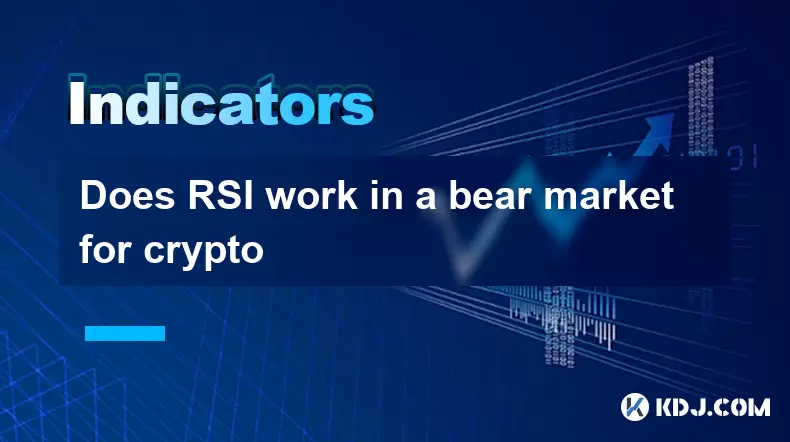
Does RSI work in a bear market for crypto
Jul 16,2025 at 01:36pm
Understanding RSI in Cryptocurrency TradingThe Relative Strength Index (RSI) is a momentum oscillator used by traders to measure the speed and change ...

Advanced RSI strategies for crypto
Jul 13,2025 at 11:01am
Understanding the Basics of RSI in Cryptocurrency TradingThe Relative Strength Index (RSI) is a momentum oscillator used to measure the speed and chan...

Crypto RSI for day trading
Jul 12,2025 at 11:14am
Understanding RSI in the Context of Cryptocurrency TradingThe Relative Strength Index (RSI) is a momentum oscillator used to measure the speed and cha...

Crypto RSI for scalping
Jul 12,2025 at 11:00pm
Understanding RSI in the Context of Crypto TradingThe Relative Strength Index (RSI) is a momentum oscillator widely used by traders to measure the spe...

What does an RSI of 30 mean in crypto
Jul 15,2025 at 07:07pm
Understanding RSI in Cryptocurrency TradingRelative Strength Index (RSI) is a momentum oscillator widely used in cryptocurrency trading to measure the...

What does an RSI of 70 mean in crypto
Jul 13,2025 at 06:07pm
Understanding the RSI Indicator in Cryptocurrency TradingThe Relative Strength Index (RSI) is a widely used technical analysis tool that helps traders...

Does RSI work in a bear market for crypto
Jul 16,2025 at 01:36pm
Understanding RSI in Cryptocurrency TradingThe Relative Strength Index (RSI) is a momentum oscillator used by traders to measure the speed and change ...
See all articles

























